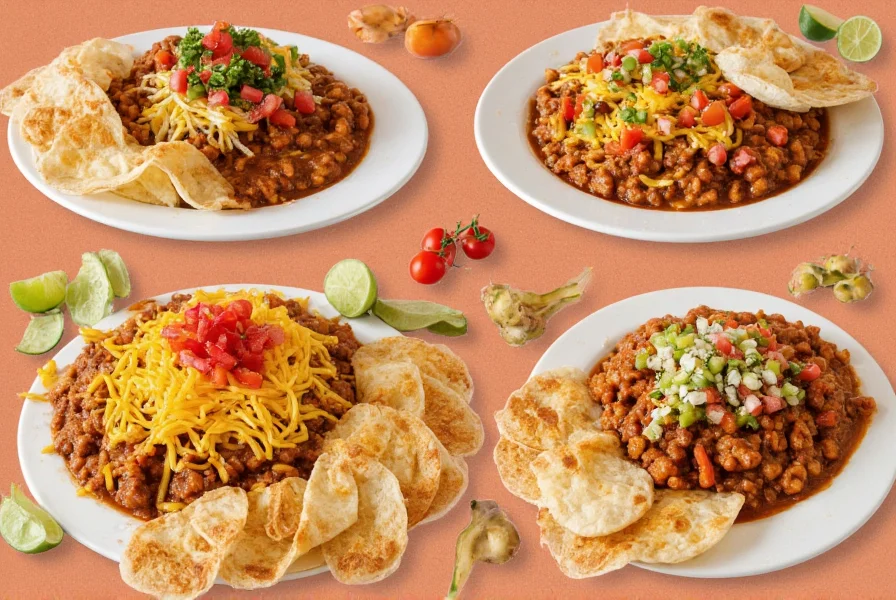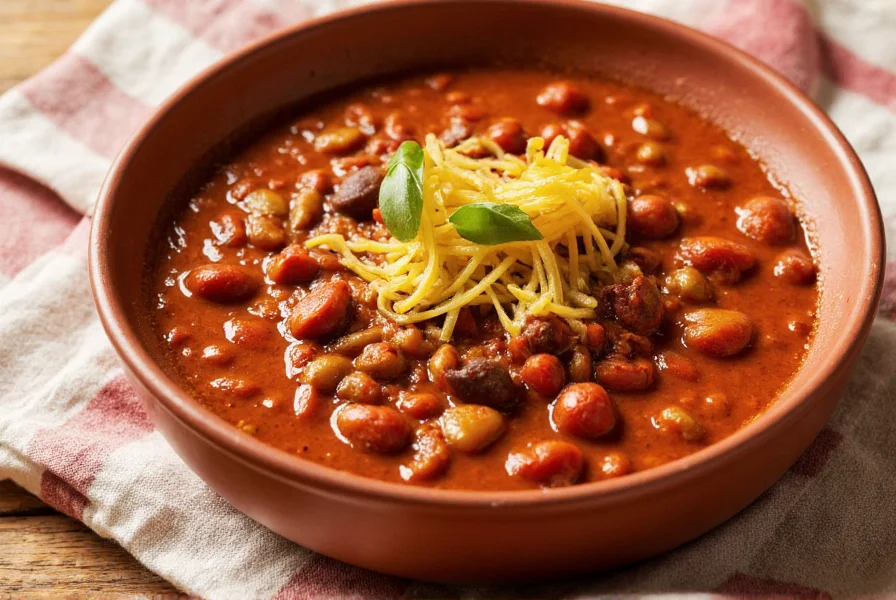Originating from mid-20th century American home cooking, Chili by Mac represents the creative fusion of two beloved comfort foods. This dish gained popularity as home cooks sought ways to stretch ingredients while creating satisfying meals during economic challenges. The combination of protein-rich chili and carbohydrate-loaded pasta creates a balanced dish that has stood the test of time.
The Essential Components of Authentic Chili by Mac
Understanding what makes a proper Chili by Mac requires examining its foundational elements. Unlike standard chili, this variation incorporates pasta directly into the stew, creating a unique texture and flavor profile. The dish typically features:
- Ground beef or alternative protein source
- Elbow macaroni pasta (the "Mac" component)
- Tomato-based chili sauce with signature spices
- Cheese topping (usually cheddar)
- Optional beans for added texture
The magic happens when the pasta absorbs the chili's flavors while maintaining its distinct texture. This interplay between the soft pasta and robust chili creates a culinary experience greater than the sum of its parts.

Traditional Preparation Method
Creating an authentic Chili by Mac requires attention to cooking sequence and ingredient integration. The proper technique ensures neither component overpowers the other.
| Step | Key Action | Time Required |
|---|---|---|
| 1 | Brown ground meat with onions and garlic | 8-10 minutes |
| 2 | Add chili spices and tomato base | 5 minutes |
| 3 | Cook pasta separately until al dente | 7-9 minutes |
| 4 | Combine chili and pasta, simmer together | 15-20 minutes |
| 5 | Add cheese topping before serving | 2 minutes |
The critical step that distinguishes excellent Chili by Mac from average versions is the simmering period after combining components. This 15-20 minute integration period allows the pasta to absorb chili flavors without becoming mushy. Many home cooks make the mistake of adding uncooked pasta directly to the chili, resulting in either overcooked pasta or undercooked chili.
Regional Variations Across America
Chili by Mac has evolved differently across American regions, reflecting local tastes and available ingredients:
- Midwest Style: Features kidney beans and a mild spice profile, often served with shredded cheddar
- Southwest Variation: Incorporates fire-roasted tomatoes and jalapeños for added heat
- East Coast Interpretation: Uses ground turkey instead of beef with a tomato-heavy base
- West Coast Version: Includes black beans and avocado garnish for a fresher profile
These regional adaptations demonstrate how Chili by Mac has become a canvas for culinary expression while maintaining its core identity as a comforting pasta-chili fusion.

Modern Twists on a Classic Dish
Contemporary home cooks have developed innovative approaches to traditional Chili by Mac that accommodate various dietary preferences while enhancing flavor complexity:
For those exploring how to make chili mac recipe with dietary restrictions, consider these adaptations:
- Vegan Version: Substitute beef with textured vegetable protein and use dairy-free cheese alternatives
- Gluten-Free Option: Replace traditional macaroni with rice pasta or quinoa
- Protein Boost: Add lean ground turkey or plant-based meat alternatives
- Spice Customization: Adjust heat levels with different chili varieties from mild ancho to fiery habanero
The best chili by mac preparation method balances tradition with personal taste preferences. Many experienced cooks recommend reserving some cheese for topping after baking, creating a delightful contrast between the melted interior cheese and the crispy top layer.
Serving Suggestions and Pairing Ideas
Chili by Mac shines as a standalone meal but reaches its full potential when paired thoughtfully. Consider these complementary elements:
- Cornbread or garlic bread for dipping
- Fresh green salad with tangy vinaigrette to cut through richness
- Cold beer or iced tea as beverage pairings
- Sour cream or Greek yogurt dollop for added creaminess
When planning your easy chili macaroni and cheese fusion meal, remember that proper portioning ensures each component receives adequate attention. A standard serving ratio of 60% chili mixture to 40% pasta creates the ideal balance for most palates.
Storage and Reheating Best Practices
One advantage of homemade chili by mac step by step preparation is its excellent storage properties. Properly stored, this dish maintains quality for 3-4 days in the refrigerator or up to 3 months frozen.
For optimal reheating results:
- Add small amounts of water or broth when microwaving to restore moisture
- Reheat on medium power to prevent uneven heating
- Stir occasionally during reheating process
- Refresh cheese topping after reheating for best presentation
These techniques preserve the integrity of both components, ensuring your chili mac variations for family dinner maintain their appeal through multiple servings.
Frequently Asked Questions
What's the difference between Chili Mac and regular chili?
Chili Mac specifically incorporates cooked macaroni pasta into the chili mixture, creating a distinct texture and flavor profile. Regular chili typically contains meat, beans, and tomatoes without pasta. The pasta in Chili Mac absorbs the chili flavors while providing a different mouthfeel than traditional chili.
Can I make Chili by Mac in a slow cooker?
Yes, you can prepare Chili by Mac in a slow cooker, but with important modifications. Cook the pasta separately and add it during the last 30-60 minutes of cooking to prevent it from becoming mushy. Adding uncooked pasta directly to a slow cooker will result in overcooked, disintegrated pasta that loses its distinctive texture.
What type of cheese works best for topping Chili Mac?
Sharp cheddar provides the classic flavor profile for Chili Mac, but many cooks prefer a blend of cheeses. A combination of cheddar for flavor, Monterey Jack for meltability, and a small amount of Parmesan for depth creates an exceptional topping. For those exploring the best chili by mac preparation method, consider adding the cheese during the last 5 minutes of cooking for optimal melt and flavor integration.
How can I prevent my Chili Mac from becoming too dry?
Maintain proper moisture balance by reserving some pasta cooking water and adding small amounts as needed during the simmering phase. The ideal chili mac variations for family dinner should have a slightly saucy consistency that coats the pasta without being watery. If your dish becomes too dry during storage, add a tablespoon of broth or water when reheating.
Can I add beans to traditional Chili Mac?
While traditional Midwest-style Chili Mac often includes kidney beans, purists argue that authentic versions shouldn't contain beans. The inclusion of beans represents a regional variation rather than a requirement. If you're preparing an easy chili macaroni and cheese fusion for family dinner, consider offering beans on the side to accommodate different preferences.











 浙公网安备
33010002000092号
浙公网安备
33010002000092号 浙B2-20120091-4
浙B2-20120091-4